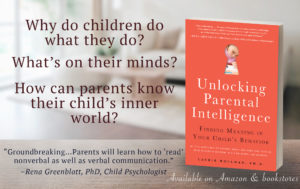How to Prepare for a Move and Transferring Your Child to a New School
First Considerations

There are many considerations when moving your child to a new school, especially when the school year is already in session. Considering the age and grade of your child is important so you speak in your child’s language and vocabulary pertinent to their stage of development. Remember that actual age and developmental age are different. It is the latter to be concerned with and to appreciate.
Specific steps vary of course depending on the reasons for the move and the temperament of the child as well as your own anxiety or hopefulness for the move. Keep in mind that your attitude and hopefulness will translate to your child in your tone of voice, your gestures, your openness to questions, and honesty about the child’s expectations that this may not be a smooth ride.
Why Are You Moving?

Given these considerations, clarify for yourself why you are moving, why it’s important to you, what has gone through your mind in making this decision and how imperative the move is for you as well as your child. Moving is about change and uncertainty as common in life. This is an opportunity if done with empathy and forethought. It is an opportunity for your child to experience change as a positive aspect of life at any age if it needn’t be abrupt, unexpected, or based on a crisis.
I will proceed as if this isn’t a traumatic move based on a crisis that requires a sudden life shift.
When you are entirely clear about your own reasons, then you can choose the reasons to share that suit your child’s inner and outer world. A brief opening is often suggested so the child can begin to absorb what you are saying. If this is a possibility or a definite fact, make that clear from the start to reduce doubts. After all you are introducing uncertainty, so do so in a clear and certain way. That approach suggests this will occur with predictability and preparation and assurances all along the way. While your decision is an adult one and will not change regardless of fears and hopes that surface, be empathically open to real and imagined hopes and fears.
Reasoning and Listening to Children Are Both Needed
In other words, state when and where you are going, any new living conditions, the environment that may be similar or different from the one you currently live in, the name of the school, the number of children in the classroom, or the various subject areas and levels (honors, advanced placement, enriched classes, supportive academic services) if the child is in middle or high school. These details should be given slowly after the child has digested this move IS going to happen.
General Tips:
This is an opportunity to improve your listening skills and in fact, build your relationship with your child. You are going to be your child’s most important ally in this change. Some of the following tips may or may not be practical or possible, but they are suggested:
- Visit the new school, including a walk in the hallways, possibly meeting the teacher, opening a locker, seeing the gym, music room, etc. based on what interests your child.
- Drive or walk around the school environment. Play in the playground or walk around and take your time.
- Take the child on the route they will be taking even if they will be in a bus.
- If they will be in a bus, consider if the first few days, you may want to drive anyway.
- Consider if your child separates relatively easily and if not, what helps. Ask the child what helps if this concerns them. Rather than prescribe what you plan to do, instead describe what is possible and be open to your child’s suggestions.
- While you will naturally be prone to stress the positives, the child may counter with the negatives. Listen carefully without interruption for what is based on reality and what is imagined. Clarify without judgment.
- If by chance, the child already knows some kids in the new school, plan a visit. I’m not suggesting springing new kids on your kids who may or may not jive.
- Visit the town, the village if there is one, where you will go food shopping, etc. to make this new location feel like home.
- If you are moving as an intact family, point that out as a positive if you all generally get along. If you are moving and one or more family members will not be going with you, this is an entirely different conversation with far more questions, doubts, uncertainties, and yet may also be positive for various reasons.
Stability is the Goal

Home Life is Changing. It’s hard for parents and kids to keep up with these new times.
Stability is based on preparedness, certainties, predictability, realistic expectations that adaptation takes time. Appreciate tears rather than dismiss them (surely don’t do that), and in the weeks in preparation be acutely observant of tell-tale signs of questions being hidden such as pleasing Mommy being a priority rather than honest feelings.
There’s no fixed order of definite steps to take except the steps that help YOUR child at his or her developmental age, experience with previous changes, aptitude at school, previous general successes or struggles at school academically and socially, and any special needs that you must be sure the school is aware of and fully capable of attending to from the start.
Staying in Touch with Friends
 Offer various ways your children can keep in touch with close friends if they wish to, if you have financial resources you can invite these kids to visit at your expense. The internet makes the world bigger and yet, smaller, so access to previous and new friends is very easy. When you move, this is not the time to limit computer access if it’s a vehicle to stay connected with those you’ve left behind.
Offer various ways your children can keep in touch with close friends if they wish to, if you have financial resources you can invite these kids to visit at your expense. The internet makes the world bigger and yet, smaller, so access to previous and new friends is very easy. When you move, this is not the time to limit computer access if it’s a vehicle to stay connected with those you’ve left behind.
The UPSIDE

On the upside—there definitely are many—-you are preparing your child and yourself for life’s new experiences. Accept doubts and worries while also after carefully listening to them without interruption (try not to say, yes, but…) asking your child for what might be an upside for them. If they say, “nothing!!” accept this pessimism and then ask them to think a second time of what will give them an opportunity to look forward to the move. And definitely follow through.
Trust is imperative.
Conclusion

Moving isn’t dying. Moving isn’t a final goodbye with internet resources.
Moving isn’t a vacation that will end.
Moving isn’t even a crisis if handled with love and support.
And moving takes time—there will be lots of unopened boxes for who knows how long literally and figuratively; new rooms to decorate (by your child, by the way), smaller or larger home settings, and possibly, new countries or cultures to grow with and into. If this change is viewed as something “we do together,” it’s remarkably reassuring. (If you are not doing this “together,” you need a second article.)

